For power to be average i must be average current, so I am surmising
that the effective current is the average current.
In short, average voltage x average current only equals average power when the voltage and current are DC quantities. Think about the following example: -
If you applied 230 V AC from your utility power outlet to a heating element, it would get warm or even hot. It is taking power that you can be billed for. 230 V AC is a sine wave and all sine waves have an average value of zero. The resulting current flowing through the heating element is also a sine wave with an average value of zero.
So, using average voltage x average current produces zero average power and clearly that is wrong. It is RMS voltage x RMS current that is going to give a meaningful answer (irrespective of whether it's DC or AC).
You have to go back to basics and ask yourself what power is - it is voltage x current and these are instantaneous values multiplied together. This results in a power waveform like this: -

Because of the act of multiplication, the power waveform now has an average value that is non-zero. Taking this a step further, if the load resistor were 1 ohm then, the amplitude of current will equal the amplitude of the applied voltage so, the power becomes the average of \$v^2\$.
This leads us to say that power is the mean of the square of voltage (or current) and, given that we have chosen 1 ohm in this example, we can also say that the effective voltage that produces this power is the square root of the mean of the voltage squared or the "RMS" value.
So, for a sine wave of peak amplitude \$v_{pk}\$, the top of the power wave is \$v^2_{pk}\$ and, because the power wave produced by a sine wave squared is also a sine wave (at twice the frequency), the average (mean) value is: -
\$\dfrac{v^2_{pk}}{2}\$. Then taking the square root to get the effective voltage we get \$\sqrt{\dfrac{v^2_{pk}}{2}}\$ or \$\dfrac{v_{pk}}{\sqrt{2}}\$
In effect the RMS value of an AC voltage (or current) is the equivalent value of a DC voltage (or current) that produces the same heating effect in a resistive load.
So no, average voltage or average current is irrelevant but average power is king.

